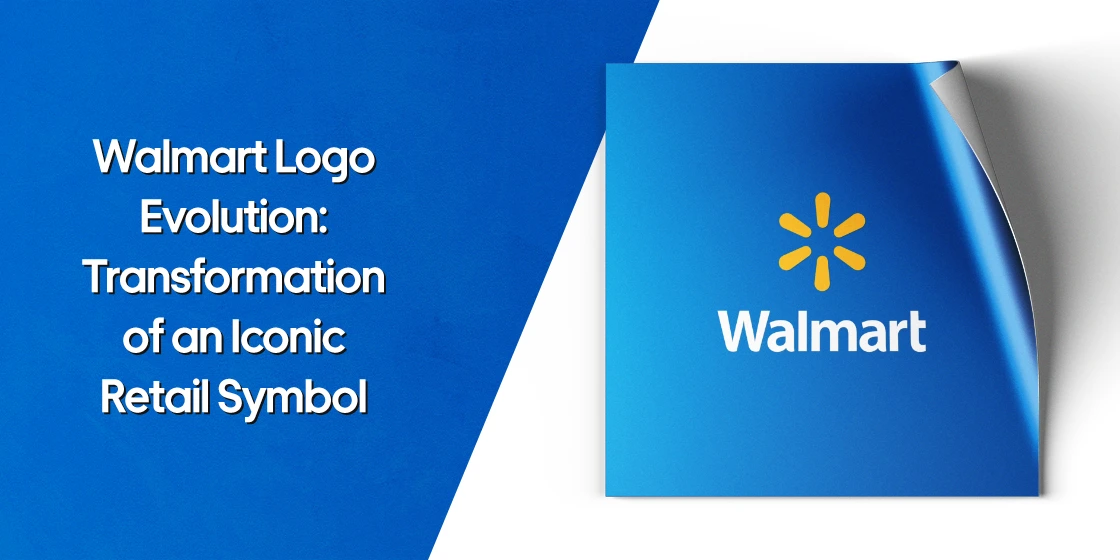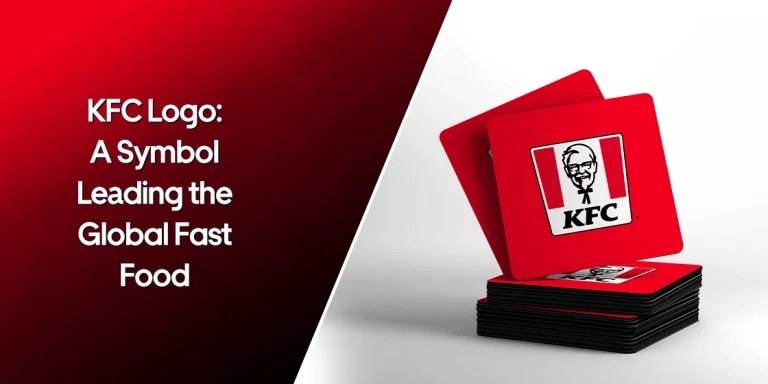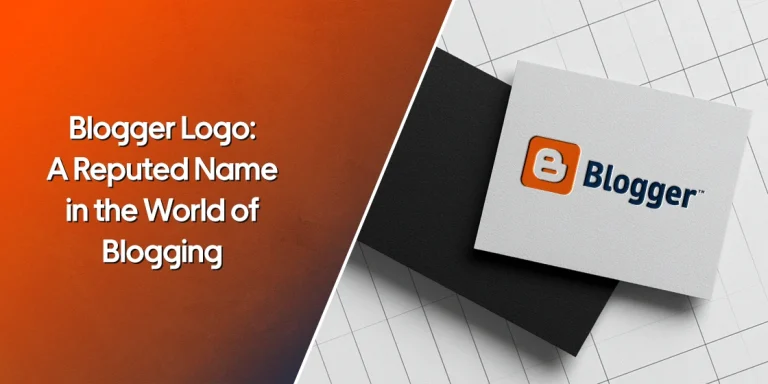
Table of Content
Discover How the Walmart Logo Has Evolved Over the Decades
The Walmart logo stands as one of the most instantly recognizable symbols in American retail. It represents a brand that serves over 255 million customers weekly across more than 10,500 stores worldwide. This iconic emblem has undergone a fascinating transformation since the company’s founding, evolving from a simple black-and-white wordmark to the vibrant blue and yellow design we know today.
Each iteration of the Walmart logo tells the story of America’s largest retailer and its journey from a small Arkansas discount store to a global retail powerhouse. What makes the logo particularly intriguing is how it perfectly balances heritage with innovation. The current design, featuring the distinctive yellow “spark” symbol alongside clean blue typography, has become so embedded in consumer consciousness that it transcends mere branding to represent accessibility, value, and convenience.
The most recent 2025 refresh demonstrates how even subtle changes can breathe new life into an established brand while maintaining the recognition that took decades to build. Understanding the evolution of this logo offers valuable insights into strategic brand development and the power of visual identity in building consumer trust. Let’s take a deeper look at it from a logo design agency’s perspective. Let’s begin.
Evolution of the Walmart Logo Through the Years – A Detailed Look
Over the decades, the Walmart logo has transformed with the times into the symbol we all know today. Let’s dive in and explore this evolution in greater detail. From its earliest iteration when it transformed from Walton’s into Walmart, to the current Walmart symbol, here’s what the transformation represented.
The Genesis: Walmart’s First Logo (1962-1964)

When Sam Walton opened the first Walmart store in Rogers, Arkansas, on July 2, 1962, the initial logo reflected the modest ambitions of what would become the world’s largest retailer. The original Walmart logo was strikingly simple – featuring the company name in plain black capital letters against a white background. This no-frills approach perfectly aligned with Walton’s core philosophy of providing maximum value at minimum cost, eschewing expensive design elements that might increase operational expenses.
The simplicity of the logo early in retail store logos of that era served multiple practical purposes. During the 1960s, most small retailers operated with limited marketing budgets. That meant that elaborate logo designs were primarily reserved for major corporations. Walton’s decision to keep the visual identity straightforward reflected his focus on operational efficiency rather than flashy branding. The clean, readable typeface ensured excellent legibility across various applications, from storefront signage to basic advertising materials.
This foundational design established several principles that would guide future iterations of the Walmart logo. The emphasis on clarity, readability, and cost-effectiveness became hallmarks of Walmart’s approach to visual communication.
The Frontier Era: Western-Inspired Branding (1964-1981)

By 1964, Walmart had begun expanding beyond its initial Arkansas location, and the company introduced its first major logo redesign to reflect this growth. The new design incorporated a hyphen between “Wal” and “Mart,” creating the familiar “Wal-Mart” wordmark that would persist for decades. More significantly, this iteration featured a distinctive Western-inspired frontier font that evoked America’s pioneering spirit and rural heritage.
This frontier-style typeface represented a strategic branding decision that positioned Walmart as authentically American and connected to the country’s agricultural roots. The design choice resonated particularly well with rural and small-town customers who formed the company’s primary target demographic during this expansion phase. The rustic aesthetic communicated reliability, tradition, and down-to-earth values that contrasted sharply with the sophisticated urban retail environments of department stores.

Throughout the late 1960s and 1970s, Walmart experimented with various iterations of this Western-themed wordmark logo design, sometimes enclosing it within decorative borders or adding slogans like “We Sell for Less” and “Satisfaction Guaranteed.” These design variations reflected the company’s evolving understanding of its brand identity while maintaining the frontier aesthetic that had proven successful with its core customer base. The Western influence would persist in various forms until the early 1980s, when Walmart’s national expansion required a more universally appealing visual identity.
The Modernization Phase: Clean and Professional (1981-1992)

The 1981 logo redesign marked Walmart’s transition from a regional discount retailer to a national retail force. The company abandoned the frontier-inspired typography in favor of a bold, clean sans-serif typeface that projected professionalism and modernity.
This wordmark represented a calculated attempt to differentiate Walmart from competitors while maintaining some connection to its rustic, down-to-earth heritage. The color choice suggested natural materials, subtly reinforcing the company’s rural American roots while presenting a more sophisticated image suitable for suburban markets. The typography was deliberately bold and condensed, maximizing impact while maintaining excellent readability across various scales and applications.
The 1981 design also demonstrated Walmart’s growing confidence in its brand recognition, trusting that the Walmart name alone carried sufficient meaning and value for consumers. This shift reflected the company’s evolution from a small regional player to a brand with genuine national recognition and market presence.
The Star Era: Embracing American Symbolism (1992-2008)

In 1992, just one month after founder Sam Walton’s death, Walmart introduced what would become its longest-lasting logo design. The most significant change was replacing the hyphen between “Wal” and “Mart” with a five-pointed star, creating a powerful symbol that emphasized the company’s American identity. This design choice occurred during a period of increased globalization and economic uncertainty, when many consumers sought brands that represented traditional American values.
The star symbol carried multiple layers of meaning that resonated with Walmart’s customer base. It evoked patriotism, excellence, and the American dream of success through hard work and determination. This integration strategy proved highly effective for building brand recognition and emotional connection.
The color palette returned to blue, establishing the foundation for Walmart’s current brand identity. Blue psychology suggests trustworthiness, reliability, and competence – qualities essential for a retailer seeking to build long-term customer relationships. The combination of blue typography with the integrated star symbol created a design that felt both professional and approachable, serious about business yet connected to American cultural values.
The Spark Revolution: Innovation and Optimism (2008-2025)

The 2008 logo redesign represented the most dramatic transformation in Walmart’s visual identity, introducing the iconic yellow “spark” symbol that has become synonymous with the brand. Designed by the prestigious Lippincott agency, this refresh eliminated the hyphen entirely, changing the company name from “Wal-Mart” to simply “Walmart” while introducing a six-pointed sunburst icon that radiated energy and optimism.
The spark symbol carries profound symbolic meaning beyond its aesthetic appeal. According to Walmart, the six points represent the company’s core values: respect for the individual, service to customers, striving for excellence, acting with integrity, partnership, and responsibility to communities. This, combined with the iconic blue and yellow color combinations, transforms a simple graphic element into a comprehensive representation of corporate philosophy and values. The spark also evokes the “lightbulb moment” of inspiration that led Sam Walton to create his revolutionary retail concept.
The 2025 Refresh: Digital-First Evolution

In January 2025, Walmart unveiled its first logo update in nearly two decades, introducing subtle but meaningful changes designed to reflect the company’s evolution into a “people-led, tech-powered omnichannel retailer.” The refresh demonstrates how established brands can modernize without sacrificing recognition, making strategic adjustments that enhance performance across digital platforms while honoring brand heritage.
The updated wordmark features custom typography inspired by founder Sam Walton’s classic trucker hat, creating a tangible connection to the company’s roots while serving contemporary design needs. The new font, called “Everyday Sans,” offers improved readability across digital devices while maintaining the approachable character that has made Walmart’s branding so successful. The typography appears fuller and more robust, ensuring excellent performance at various sizes and screen resolutions.
The spark symbol received its own thoughtful evolution, with more organic curves that feel “approachable and less rigid” according to Walmart’s design team. The enhanced yellow, now called “Spark Yellow,” appears brighter and more vibrant, while the blue has been enriched to “True Blue” – a deeper, more saturated tone that performs better across digital environments. These color improvements ensure the logo maintains impact and visibility across the expanding array of digital touchpoints where customers interact with the Walmart brand.
Logo Elements, Color Psychology, and Brand Recognition of the Walmart Logo
The Walmart logo’s strategic use of blue and yellow creates powerful psychological associations that support the company’s market positioning. Blue has long been associated with trust, reliability, and competence – crucial attributes for any retailer seeking to build lasting customer relationships. This color choice helps establish credibility and suggests that Walmart is a dependable partner for consumers’ shopping needs.
Yellow, particularly in the context of the spark symbol, evokes optimism, energy, and innovation. This bright, attention-grabbing color ensures the logo stands out in crowded retail environments while suggesting that shopping at Walmart should be a positive, uplifting experience. The combination of stable blue and energetic yellow creates a balanced emotional response that appeals to a broad demographic range, from practical budget-conscious shoppers to families seeking convenient one-stop shopping solutions.
Typography Evolution and Design Philosophy
Throughout its evolution, the Walmart logo has demonstrated sophisticated understanding of typography’s role in brand communication. Early frontier-style fonts connected the brand to American heritage and rural values, while the clean sans-serif approaches of later designs projected modernity and professionalism. Each typographic choice reflected strategic decisions about how Walmart wanted to position itself in the marketplace and what values it wanted to emphasize to consumers.
The current custom typography represents the culmination of decades of learning about effective brand communication. The “Everyday Sans” logo fonts balances readability with personality, ensuring excellent performance across traditional and digital media while maintaining the approachable character that has become central to Walmart’s brand identity. The decision to capitalize only the “W” while keeping other letters lowercase creates visual hierarchy while reinforcing the brand’s friendly, accessible personality.
Digital Transformation and Brand Adaptation
The 2025 logo refresh explicitly acknowledges Walmart’s transformation from a primarily brick-and-mortar retailer to a sophisticated omnichannel operation that seamlessly integrates physical stores with digital commerce. The enhanced design elements perform optimally across smartphone screens, tablet displays, and large-format digital signage, ensuring consistent brand experience regardless of how customers choose to interact with the company.
Digital-first design considerations influenced every aspect of the refresh, from color saturation levels that reproduce accurately across various screen technologies to typography weights that maintain legibility at small sizes. The separated positioning of the spark symbol and wordmark provides greater flexibility for digital applications, allowing brand managers to adapt the logo configuration for different platforms while maintaining visual consistency and recognition.
The emphasis on organic curves and refined spacing reflects contemporary design trends that prioritize human-centered, approachable aesthetics over rigid geometric forms. This evolution positions Walmart as a forward-thinking, customer-focused brand that understands and adapts to changing consumer preferences while maintaining the core values that have driven its success for over six decades.
Frequently Asked Questions
| What does the yellow spark in the Walmart logo represent? The yellow spark in the Walmart logo symbolizes inspiration, innovation, and the company’s six core values: respect for individuals, service to customers, striving for excellence, acting with integrity, partnership, and responsibility to communities. It also represents the “lightbulb moment” of inspiration that led founder Sam Walton to create his revolutionary retail concept, making it both a symbol of the company’s past achievements and future aspirations. |
| When did Walmart change from “Wal-Mart” to “Walmart” in its logo? Walmart officially dropped the hyphen and changed from “Wal-Mart” to “Walmart” in 2008 as part of a major rebranding effort. This change coincided with the introduction of the iconic yellow spark symbol and represented the company’s evolution from a traditional discount retailer to a modern, comprehensive retail and digital services provider. |
| How has the Walmart logo changed in 2025? The 2025 Walmart logo refresh introduced subtle but meaningful improvements including a custom “Everyday Sans” font inspired by founder Sam Walton’s trucker hat, enhanced “Spark Yellow” and “True Blue” colors for better digital performance, and more organic curves in the spark symbol. While maintaining brand recognition, these changes reflect Walmart’s evolution as a “people-led, tech-powered omnichannel retailer.” |
| Why did Walmart choose blue and yellow for its logo colors? Walmart selected blue and yellow for their powerful psychological associations that support the company’s brand positioning. Blue conveys trust, reliability, and competence – essential qualities for building customer confidence. Yellow represents optimism, energy, and innovation, suggesting that shopping at Walmart should be a positive experience. Together, these colors create a balanced appeal to diverse customer demographics. |
| What font does Walmart use in its current logo? The current Walmart logo uses a custom typeface called “Everyday Sans,” developed specifically for the 2025 brand refresh. This font was inspired by typography found on founder Sam Walton’s classic trucker hat and is based on elements from the Antique Olive font family. The custom design ensures optimal readability across digital platforms while maintaining the approachable, friendly character that defines Walmart’s brand personality. |
Conclusion
The evolution of the Walmart logo represents far more than a series of design updates – it chronicles the transformation of American retail and the power of strategic brand development. From its humble origins as a simple black-and-white wordmark to the sophisticated, digitally-optimized symbol of today, each iteration has reflected Walmart’s growth, values, and market positioning while building the recognition and trust that define successful global brands.
The 2025 refresh demonstrates how established brands can honor their heritage while embracing innovation, making strategic adjustments that enhance performance without sacrificing the recognition built over decades of consistent application. The balance between tradition and progress embodied in Walmart’s current logo offers valuable lessons for any organization seeking to evolve its brand identity while maintaining customer loyalty and market recognition.
As Walmart continues expanding its digital capabilities and global reach, the logo will undoubtedly face new challenges and opportunities. However, the strong foundation of symbolism, color psychology, and design excellence established through decades of thoughtful evolution positions the brand well for continued success in an increasingly complex and competitive retail landscape.

Logopoppin
Logopoppin is a graphic design agency that specializes in logo designing, web development, video production and advanced branding services. We love to innovate businesses with new age technologies, allowing them to improve their visual reputation.



